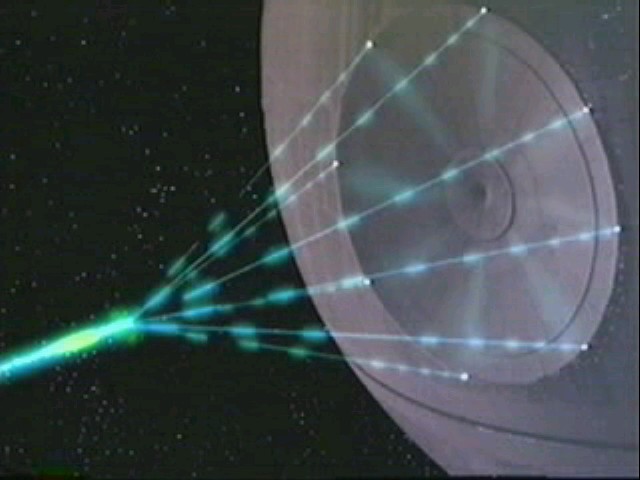
Posted on 02/21/2005 8:23:32 AM PST by dead
WASHINGTON - Cosmic ray detectors, already used to look into the great Cheops pyramid in Egypt, could be enlisted to peer into cargo holds in a bid to prevent possible terror attacks, scientists said.
The detectors read muon particles, which are more powerful than gamma or so-called X-rays.
They would peek into the millions of shipping containers entering the United States by air, ship and land, to detect even nuclear materials wrapped in lead, physicist Chris Morris of Los Alamos National Laboratory told a conference this weekend of the American Association for the Advancement of Science.
"Existing radiographic methods are inefficient for detecting shielded nuclear materials and present radiation hazards to inspectors and vehicle passengers," Morris said.
And, he said, the muon rays are already around, and represent no additional risk to anyone.
The possibility of a nuclear or radiological "dirty bomb" has haunted US authorities since the September 11, 2001 attacks on New York and Washington.
However, just 5% of the millions of containers entering the country can be examined with existing equipment.
"We believe we've worked through all of the major obstacles to building a prototype system for a range of security scenarios," said Larry Schultz, also of Los Alamos National Laboratory, and a member of the team with physicist Rick Chartrand at Los Alamos.
Unlike X-rays in the dentist's office, which emanate from one point, muons from space hit the Earth from all angles.
So the challenge for any detection system is to improve computer algorithms to allow tomographic reconstruction, the scientists said.
Their device would measure the muon's path and energy as it comes in, and as it comes out the other side, of an object, such as a container.
Comparing how much energy it loses and how much it diverged from a straight line as it passed through allows a computer to sketch the object inside, said Kanetada Nagamine, of KEK Muon Science Laboratory in Japan.
Because the muon is so powerful, it can penetrate plutonium, uranium and lead, as well as steel and aluminium.
That means a muon machine could sniff out a bomb, nuclear materials or a lead casing meant to block other, lesser X-rays, Schultz said.
The margin of error, including triggering false positives or missing the real thing, is less than 3% - something that Chartrand said will improve with time.
A million-dollar muon detector could scan a truck in 20 seconds or a shipping container in a minute, he said.
Muon detectors are already used in Japan to view the innards of volcanos in hopes of predicting their eruptions.
Nagamine, a geophysicist, told reporters that he had examined several volcanos with the equipment, and has measured the amount of lava in the crater of one.
AFP
Fantastic...let's get these detectors in the field!
I say we first do "test runs" on, say, ..... Liberals Brains.
Maybe we'll gain some insight on the "Major Malfunction" within. The may just find the simple answer though, such as- a "FOR RENT" sign between there ears !
Use of this technology makes perfect sense. Therefore it will never happen.
</cynicism>
How large are those Muon detectors. It would be nice if they were compact to carry around.


'Nuff said.
Industrial strength Beeber for large-scale stuning!
Disclaimer: Opinions posted on Free Republic are those of the individual posters and do not necessarily represent the opinion of Free Republic or its management. All materials posted herein are protected by copyright law and the exemption for fair use of copyrighted works.